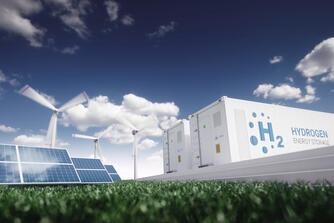Water producer
Hydrogen as a green energy carrier in steel production
The combustion of fossil fuels produces large amounts of carbon dioxide (CO2). These greenhouse gas emissions cause temperatures on earth to rise - with drastic consequences for people and the environment. As a clean energy carrier of the future, hydrogen is to be used in energy-intensive industrial processes and to power ships and aircraft.
Pure hydrogen burns in combination with oxygen to form water!

For this reason, fossil fuels are to be replaced by hydrogen in certain areas so that Germany becomes CO2-neutral by 2045 and Europe by 2050.
The hydrogen that has been predominantly used to date is referred to as gray hydrogen. Gray hydrogen is usually produced from fossil natural gas. However, carbon dioxide is released in the process. Hopes are therefore pinned on green hydrogen, which is produced from water using renewable electricity. This is done in power-to-gas plants using the electrolysis process. The hydrogen produced can either be used directly, stored or converted into other useful chemical substances in further process steps.

Hydrogen is seen as a key element between electricity and gas. The coupling of the two energy sectors is seen as having a particular opportunity. In areas that are difficult to electrify, such as processes in the chemical and steel industries, electricity from renewable energies could thus be used indirectly in the future. Therein lies the potential of the gas: The more processes are converted to green hydrogen, the less CO2 is emitted.